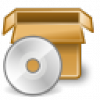How to Discover Your Music
We finally figured out how to sell music online. Everyone knew that DRM was insane, everyone sort of figured that the general public would buy music more often than steal it, and iTunes came by and demonstrated both. Now people are buying a lot of music online. Cool. Problem solved.
There is a war going on for your music discovery. For years we’ve had the iTunes model: first, figure out what the hell you’re interested in, and then you can go to the iTunes Store, click on an album, and then hear a thirty second sample. Maybe click around for another thirty second sample, and then click! You buy those songs. Or maybe the whole album. And then you own those digital bits. Cool. Problem solved. I mean, it’s solved for a few days until we all figured out that the process sucks. But we had to live with it.
Music discovery is the last thing to conquer. How can we show you, the user, which songs you’d love to listen to? How can we involve your friends in those recommendations? How about the general public? How can we get independent artists in the mix?
There have been a lot of companies — big and small — attacking this process over the last decade. Amazon, Last.fm, Spotify, Rdio, Like.fm, Lala, Rhapsody, Grooveshark, Pandora, iLike, eMusic, The Hype Machine, Slacker… it’s really a stupendous amount. Some crashed and burned, some enjoyed tepid mainstream success, some retained a small but passionate userbase.
And then Apple decides to launch Ping.
Ping
Apple’s Ping has gotten people talking. It’s a pretty large effort: in the realm of tiny, gradual growth music startups, Apple had to scale up their service to support one million full-fledged user accounts in two days, with the potential of Ping to be eventually used by the 160 million overall iTunes users. It’s a technical feat, to be sure.
That said, the buzz on the street appears to be lukewarm. It may just be the nerdy crew I follow on Twitter and Hacker News are too jaded in life that they scoff at Ping out of mainstream spite. But I think it’s safe to say that the initial reaction was less than stellar.
Making a Better Ping
It gets you thinking: how should Ping have been launched? Why do people dislike it? More importantly, what cool shit did Apple ignore that should have been in there from the start?
I used to be a steadfast believer in Jobs' usual comment: people may want to rent movies, but people want to own their music. I still think that’s true, except in the case of music discovery. When I’m trying out new music, when I want to browse what my friends have been listening to, when I just want to listen to someone’s random playlist… in all of those scenarios I’m fine with paying a monthly fee in order to get full access to streaming every song I want, on demand.
I’ve come to think Ping should have been more like Rdio and less like iTunes. In fact, that’s what I’ve decided my music setup will be for the foreseeable future: all of my “main” music is in iTunes, all of my music discovery is handled by Rdio.
Rdio does a few things really well: on login I get a snapshot of what my friends have been listening to (above). I can also browse their playlists and make my own. More importantly, I pay a small monthly fee and I can stream everything on the site, without incessant 30-second limitations, without locked-in walled gardens. I’ve already found a number of new artists in the last few months that I would never have otherwise heard of. I have a somewhat less favorable outlook on Ping’s ability to deliver that.
Apples and Labels
So why isn’t Ping more like Rdio, or Spotify, or the multitude of other social music networks with good ideas? Two reasons: Apple, and Labels.
Apple
Apple doesn’t understand the Internet. This could be made no clearer than when Ping launched on iTunes and on iPhone (and presumably soon enough, on iPad) only. If you’re trying to make a social network for music, you’re cutting the legs out from under you if you take away the one sharing option people understand: URLs. Taking it out of the browser means it’s a walled garden. Yes, there are ways to link to individual Ping pages through really gnarly-looking URLs, but most people won’t understand how to do that in the first place (not to mention scores of bookmarklets, browser plugins, and other sharing niceties aren’t present in iTunes). Apple has a funny idea of what a social network is.
Labels
I think the other elephant in the room is music labels. Apple’s at a disadvantage: they’re big enough to freak out the old guys in boardrooms across Hollywood. Startups get more lenient terms because of smaller marketshare and less potential for disaster. This is why Apple’s struggling to even get one minute previews of songs on iTunes. Any big changes Apple wants to make to the industry is going to be fought viciously from these guys. Startups though? Do what you want. It puts Apple in a rather stagnant position.
Discovery
Ping doesn’t cut it in its current form. Inviting people to share their musical tastes and building a social platform on 30 second sound bites is just an extension of the iTunes Store, not a novel way to explore your own potential musical tastes. And it’s a bit of a bummer… a network with as much pull and draw as iTunes could have been really killer.
I think we’ll get there eventually. Until then, explore some of the other smaller players… they’re the ones that will bring you the goods until Apple and the labels wrap their heads around the internet.
















